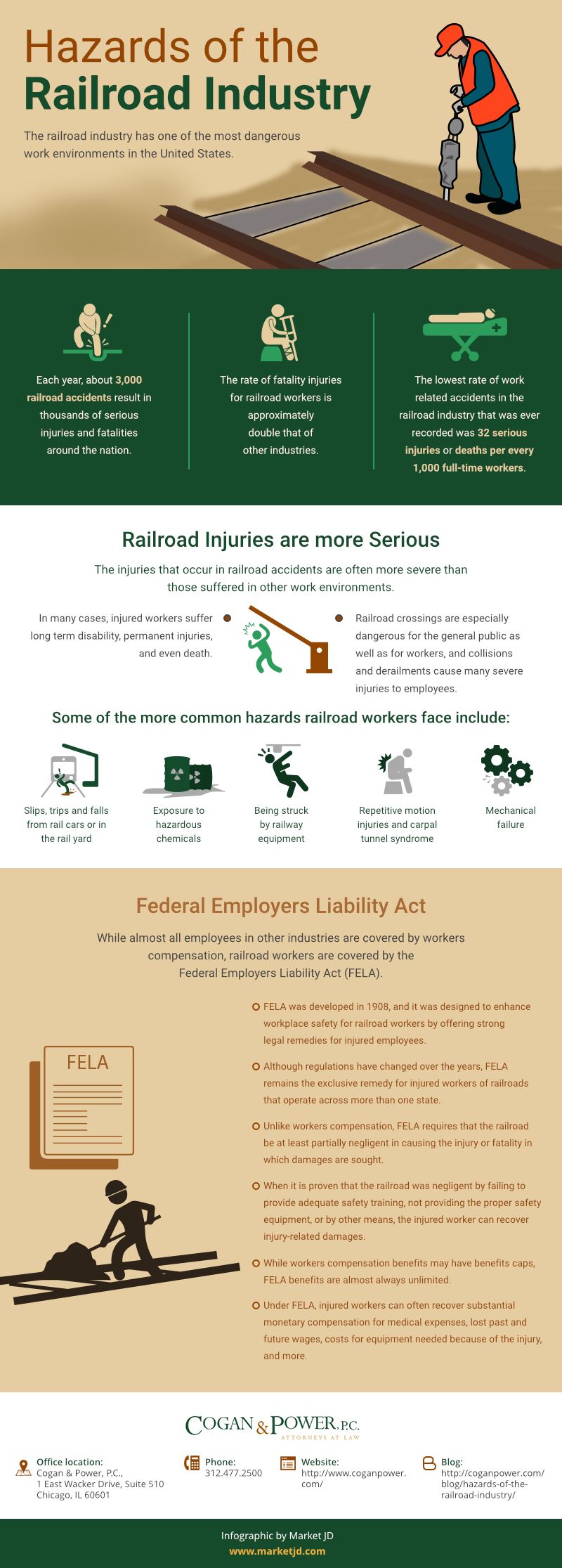The railroad industry has one of the most dangerous work environments in the United States. Each year, about 3,000 railroad accidents result in thousands of serious injuries and fatalities around the nation. In fact, the rate of fatality injuries for railroad workers is approximately double that of other industries. The lowest rate of work-related accidents in the railroad industry that was ever recorded was 32 serious injuries or deaths per every 1,000 full-time workers.

The injuries that occur in railroad accidents are often more severe than those suffered in other work environments. In many cases, injured workers suffer long term disability, permanent injuries, and even death. While railroad crossings are especially dangerous for the general public as well as for workers, and collisions and derailments cause many severe injuries to employees, there are a number of other hazards associated with the industry. Some of the more common hazards railroad workers face include:
- Slips, trips and falls from rail cars or in the rail yard
- Exposure to hazardous chemicals
- Being struck by railway equipment
- Repetitive motion injuries and carpal tunnel syndrome
- Mechanical failure
Federal Employers Liability Act
The courts treat railroad worker injuries and fatalities differently than those sustained in other industries. While almost all employees in other industries are covered by workers compensation, railroad workers are not. Instead, they are covered by the Federal Employers Liability Act (FELA). FELA was developed in 1908, and it was designed to enhance workplace safety for railroad workers by offering strong legal remedies for injured employees. Although regulations have changed over the years, FELA remains the exclusive remedy for injured workers of railroads that operate across more than one state.
Unlike workers compensation, which is a no-fault system that enables injured workers to collect benefits without proving negligence, FELA requires that the railroad be at least partially negligent in causing the injury or fatality in which damages are sought. When it is proven that the railroad was negligent by failing to provide adequate safety training, not providing the proper safety equipment, or by other means, the injured worker can recover injury-related damages. While workers compensation benefits may have benefits caps, FELA benefits are almost always unlimited. Under FELA, injured workers can often recover substantial monetary compensation for medical expenses, lost past and future wages, costs for equipment needed because of the injury, and more.
